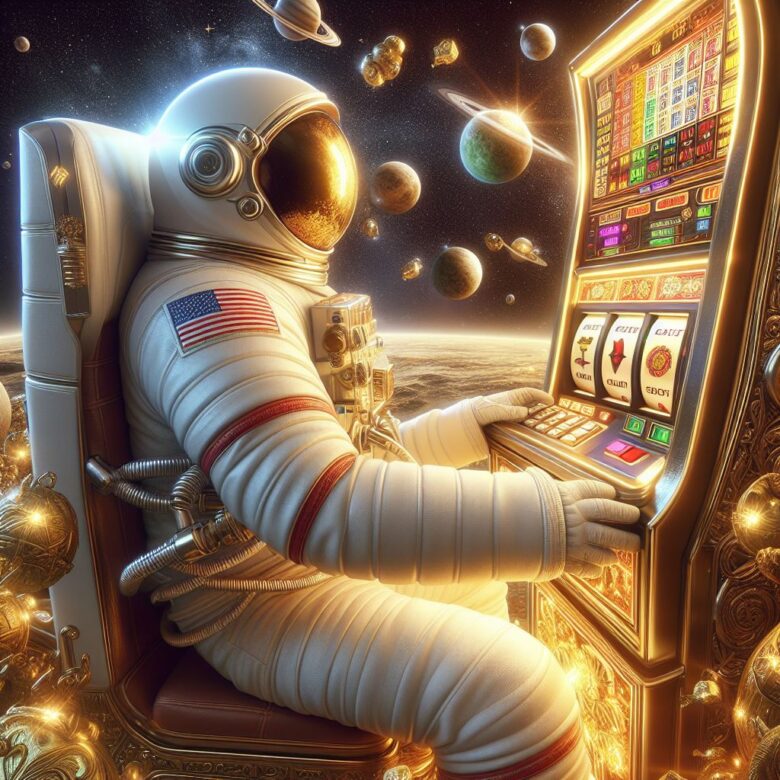Tip Memilih Waktu Terbaik Bermain Wild Hop & Drop Dalam dunia perjudian daring yang terus berkembang, pemain sering mencari strategi dan tip untuk meningkatkan peluang mereka dalam meraih kemenangan. Salah satu fitur terbaru yang menarik perhatian banyak pemain adalah fitur “Wild Hop & Drop” dari Pragmatic Play. Dalam artikel ini, kami akan memberikan tip tentang …
Analisis: Pengaruh Volatilitas Wild Hop & Drop dari Provider Pragmatic Play telah lama dikenal sebagai penyedia perangkat lunak perjudian daring yang inovatif dan terpercaya. Salah satu fitur terbaru yang diperkenalkan oleh Pragmatic Play adalah fitur “Wild Hop & Drop” yang menarik. Dalam artikel ini, kami akan menganalisis pengaruh volatilitas fitur ini terhadap kemenangan pemain. Dalam …
Dalam menyambut musim liburan yang penuh dengan kehangatan dan kegembiraan. Pragmatic Play menghadirkan sebuah kejutan Natal: Slot Sweet yang manis bagi para penggemar slot dengan perilisan terbaru mereka, “Kejutan Natal: Slot Sweet Bonanza Xmas.” Slot ini menggabungkan pesona Natal dengan kegembiraan permainan kasino. Memberikan pengalaman yang memikat bagi para pemain yang mencari hiburan selama musim …
Dalam menghadapi musim liburan, Provider Pragmatic Play kembali menghadirkan pengalaman yang memikat dengan slot terbarunya, Perjalanan ke Tanah Santa: Slot Sweet Bonanza Xmas. Slot ini mengajak para pemain untuk merasakan keajaiban Natal dalam suasana yang penuh dengan kegembiraan dan hadiah yang manis. Tema dan Desain: Slot Sweet Bonanza Xmas “Perjalanan ke Tanah Santa: Slot Sweet …
Natal dari slot online populer Manisnya Kemenangan: Strategi Rahasia Sweet Bonanza yang dikembangkan oleh Pragmatic Play. Game ini menggabungkan tema manis dengan semangat Natal dan menawarkan kesempatan bagi pemain untuk memenangkan hadiah besar. Dalam artikel ini, kita akan membahas beberapa strategi rahasia dan tips yang bisa Anda gunakan untuk meningkatkan peluang Anda memenangkan slot ini. …
Strategi Rahasia untuk Bermain Slot roulette adalah permainan kasino yang menarik dan mendebarkan, Dengan penyedia seperti Pragmatic Play di baliknya, pengalaman bermain bisa menjadi lebih mengasyikkan. Namun, untuk memenangkan permainan ini, diperlukan lebih dari sekadar keberuntungan. Dalam artikel ini, kita akan membahas beberapa strategi rahasia yang dapat membantu Anda meraih kemenangan di slot roulette dari …
Bagaimana Slot Spaceman™ dari Pragmatic Play telah menjadi salah satu permainan yang paling populer di industri perjudian daring. Dengan tema luar angkasa yang mengasyikkan, grafis yang memikat, dan fitur-fitur inovatif, Slot Spaceman™ berhasil menarik perhatian pemain dari seluruh dunia. Dalam artikel ini, kami akan menjelaskan faktor-faktor kunci yang telah membuat Slot Spaceman™ begitu populer dan …
Evolusi Slot Spaceman™ dari Pragmatic Play adalah salah satu game yang menarik di industri kasino online, menggabungkan inovasi teknologi dengan gameplay interaktif. Sejak dirilis, slot ini telah mengalami beberapa perubahan signifikan yang menunjukkan adaptasi dan evolusi dalam respons terhadap preferensi pemain dan kemajuan teknologi. Artikel ini akan menjelajahi bagaimana Spaceman™ telah berkembang dari waktu ke …
Sukses Besar di Legend of Heroes Megaways dari Pragmatic Play, salah satu pengembang permainan kasino online terkemuka. Telah mencatatkan sukses besar dengan rilisnya Legend of Heroes Megaways. Game ini telah menarik perhatian para pemain di seluruh dunia berkat kombinasi inovatif dari mekanisme Megaways yang memberikan cara menang yang revolusioner dan tema epik yang menarik. Dalam …
Mengenal Dekat dengan Legend of Heroes Megaways dari Pragmatic Play Dalam dunia kasino online salah satu pengembang game terkemuka. Inovasi dan kebaruan adalah kunci untuk menarik perhatian pemain. Pragmatic Play, salah satu pengembang game slot terdepan, telah berhasil mencuri perhatian banyak penggemar judi online melalui peluncuran slot “Legend of Heroes Megaways”. Game ini tidak hanya …









